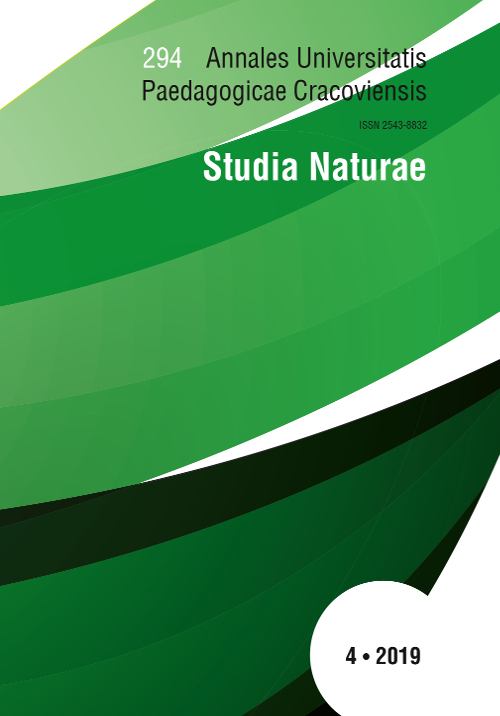Selected environmental issues of the landscape of shale (Nízký Jeseník Mt., Czechia) – preliminary results
DOI:
https://doi.org/10.24917/25438832.4.8Keywords:
post-industrial landscape, abandoned quarries, mine heaps, fauna colonisation, vegetation colonisation, cultural colonisationAbstract
The area of the Nízký Jeseník Mts. is, among other things, well known for its shale roofing tiles since the 18th century. In places where shale was intensively or extensively exploited until 1945, abandoned areas after mining works remained. In general, every mining is perceived as a activity of landscape degradation by the public. However, these indelible traces of shale mining in the form of various mining-related objects (e.g. abandoned quarries, quarry ponds, shafts, drains etc.) are also gradually becoming places that are colonised by unique plant and animal communities. There are very interesting species bond to specific environmental conditions of post-mining landscape, with frequent rare and endangered species. People have also become ‘new’ colonisers in the case of the shale landscape.
Downloads
Metrics
References
BioLib https://www.biolib.cz/cz/taxon/ [In Czech]
BVÚ (2005). Kompas. Kompas TOM BVÚ 1945-2005 vydaný k 60. výročí založení oddílu, 65p.
Braun-Blanquet, J. (1964). Pflanzensoziologie: Grundzüge der Vegetationskunde. 3. Neubearb. und Wesentlich vermehrte Aufl. Wien: Apringer-Verlag. 631p. [In German]
de Jong, Y., Verbeek, M., Michelsen, V., Bjørn, P.P., Los, W., Steeman, F., Bailly, N., Basire, C., Chylarecki, P., Stloukal, E., Hagedorn, G., Wetzel, F.T., Glöckler, F., Kroupa, A., Korb, G., Hoffmann, A., Häuser, C., Kohlbecker, A., Müller, A., Güntsch, A., Stoev, P., Penev, L. (2014). Fauna Europaea – all European animal species on the web. Biodiversity Data Journal, 2, e4034. DOI: 10.3897/BDJ.2.e4034. https://fauna-eu.org/
Konvička, M., Beneš, J., Čížek, L. (2005). Ohrožený hmyz nelesních stanovišť: ochrana a management. Olomouc: Sagittaria, 127p. [In Czech]
Kupka, J., Pohunek, J. (2017). Krajina po těžbě břidlice očima trampů a táborníků aneb o brownfieldech jinak (Nízký Jeseník). Studia ethnologica pragensia. Univerzita Karlova, 2, 134–145. [In Czech]
Tropek, R., Řehounek, J. (2012). Bezobratlí postindustriálních stanovišť: význam, ochrana a management. České Budějovice : ENTÚ BC AV ČR & Calla, 2012. [In Czech]
Polish flora https://www.atlas-roslin.pl [In Polish]
Vencl, J., Strohalm, P. (2005). Novodobá těžba štípatelných břidlic v oblasti moravskoslezského kulmu. Současnost a perspektiva těžby a úpravy nerudních surovin 3, 321–328. Konferenční materiály V Konf. SPSTUNS. Ostrava. [In Czech]
Zapletal, J., Dvořák, J., Kumpera, O. (1989). Stratigrafická klasifikace kulmu Nízkého Jeseníku. Věstník Ústředního ústavu geologického, 64(4), 243–250. [In Czech]
Hrušecký, J. (1946). Dolování pokrývačských břidlic na severozápadní Moravě a ve Slezsku. Horník, 2, 44. [In Czech]

